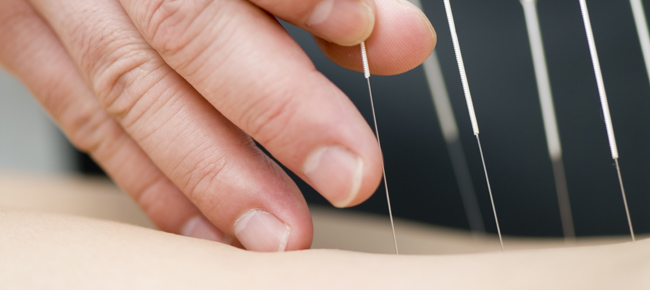
March 12, 2024
By Shu Zhao, Drexel University College of Medicine
Pregnancy is a unique period in a person’s life. During these 40 weeks, the body goes through many changes and adjustments to nurture the fetus growing inside. One common complaint, present in about 50-80% of pregnant patients, is low back and/or pelvic pain.1 As the patient gains weight, the center of gravity is shifted forward which increases the forces applied to the lower back. Back pain has also been correlated with increased levels of relaxin which is a hormone produced by the corpus luteum and uterine decidua. This hormone relaxes the connective tissue and causes greater ligamental laxity, which widens and separates the pubic bone.1,2 This pain commonly occurs between the fifth and seventh month of pregnancy and resolves postpartum, but some people can have pain as early as the first trimester. Some risk factors that increase the likelihood of developing low back and/or pelvic pain are previous chronic back pain conditions, sedentary lifestyle, age less than 20 years old, and multiple pregnancies.1 While pregnancy in and of itself already brings a disturbance of normal activity for most people, this pain can result in a low quality of life and bring additional stressors.
Treatment options for low back pain and/or pelvic pain during pregnancy
About half of all pregnant patients visit their physician for low back and/or pelvic pain.1 Treatment is usually conservative, exercise-based interventions due to concern for harm to the developing fetus. Acetaminophen and some muscle relaxants are often safe to use but other options include physical therapy, massage therapy, special pillows, acupuncture, yoga, relaxation, chiropractic procedures, support belts and corsets, and heating pads.2,3 Clinical research in this area has been limited due to the nature of pregnancy and the subjective nature of the effectiveness of such therapy on pain control.
What is acupuncture?
This blog will focus on introducing acupuncture and research that has tested its use in treating low back and/or pelvic pain during pregnancy. Acupuncture originated in China and is based on ancient physiological systems. Thin solid metallic needles are inserted into acupoints along the meridians. It is believed that the body’s vital energy, “qi,” flows along such meridians, which are associated with our internal organs. Acupuncture has been used by many to treat dental pain, headache, myofascial pain and pain of other origins. Several studies have shown that endorphins and dynorphins in the cerebrospinal fluid that block perception of pain were increased after acupuncture sessions.4 Acupuncture also increases blood flow to local skin and muscle tissues, which relieves various pain conditions.
Can acupuncture be used during pregnancy?
I came across a meta-analysis of randomized clinical controlled trials examining acupuncture as a potential therapy for low back and/or pelvic pain during pregnancy.4 This paper examined 10 studies, including a total of 1,040 pregnant women. The women enrolled in these studies were healthy young women, mostly younger than 35 years old with no pregnancy complications. Results showed that acupuncture significantly relieved pain, improved functional status and improved quality of life during pregnancy. Minor side effects such as pain and slight bleeding at needle sites, slight bruising, drowsiness and soreness occurred in less than 4% of treatment sessions but these usually self-resolved with time. There were no significant differences in Apgar scores of newborns born of women who used acupuncture compared to no interventions, thus showing acupuncture is a relatively safe treatment option. In two of the studies, some women had preterm contraction, but newborns were healthy at birth.4
Based on this paper, it seems like acupuncture could be considered for healthy young pregnant patients who are experiencing low back and/or pelvic pain. However, it is important to consider the effect of bias in the studies, differences in acupuncture intervention characteristics such as the frequency or duration of therapy or acupoints used, and the expertise of the therapist and their training. Thus, it is pertinent if you are considering the use of acupuncture to discuss your thoughts with your primary care providers and hear their recommendations.
Sources/Resources:
- Sabino J, Grauer JN. Pregnancy and low back pain. SpringerLink. https://link.springer.com/article/10.1007/s12178-008-9021-8. Published February 26, 2008. Accessed January 18, 2023
- Vermani E, Mittal R, Weeks A. Pelvic girdle pain and low back pain in pregnancy: A Review. https://www.salempainandspine.org/wp-content/uploads/2013/Pregnancy_Lowbackpain.pdf. Published 2010. Accessed January 18, 2023
- Liddle SD, Pennick V. Interventions for preventing and treating low‐back and pelvic pain during pregnancy. Cochrane Database of Systematic Reviews 2015, Issue 9. Art. No.: CD001139. DOI: 10.1002/14651858.CD001139.pub4. Accessed 18 January 2023
- Yang J, Wang Y, Xu J, et al. Acupuncture for low back and/or pelvic pain during pregnancy: A systematic review and meta-analysis of Randomised Controlled Trials. BMJ Open. https://bmjopen.bmj.com/content/12/12/e056878. Published December 1, 2022. Accessed January 18, 2023